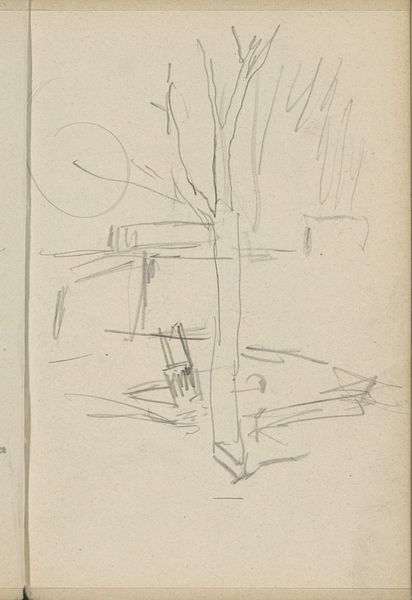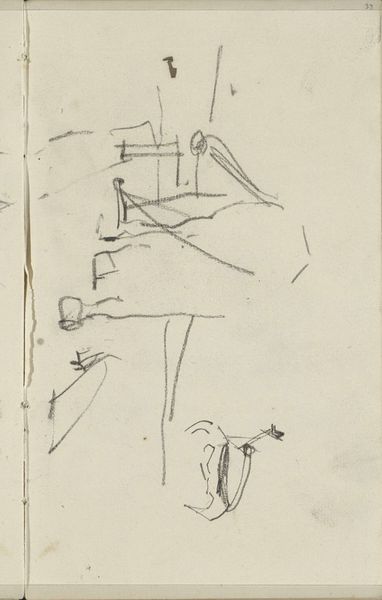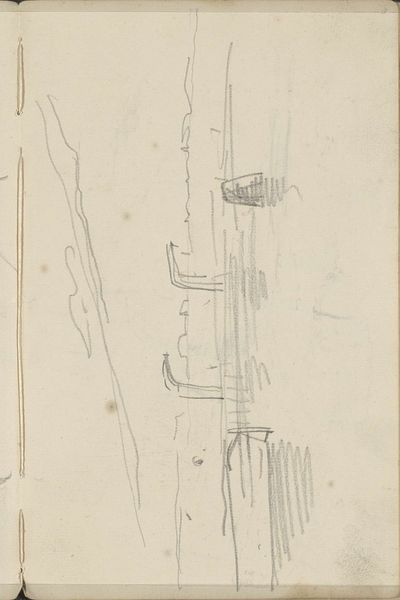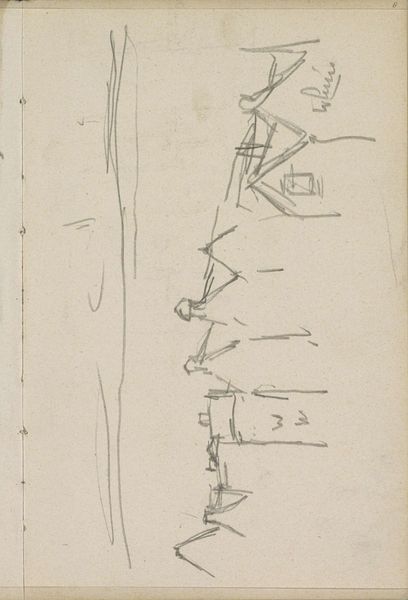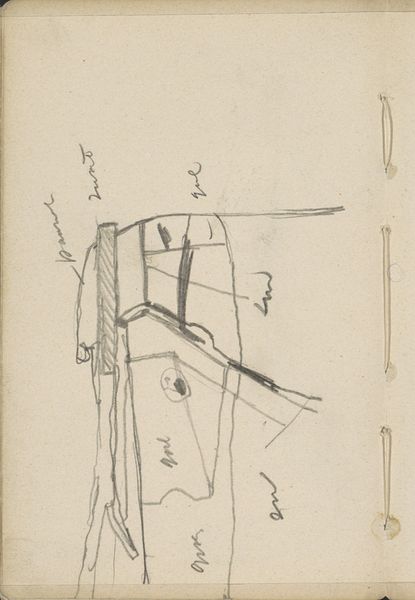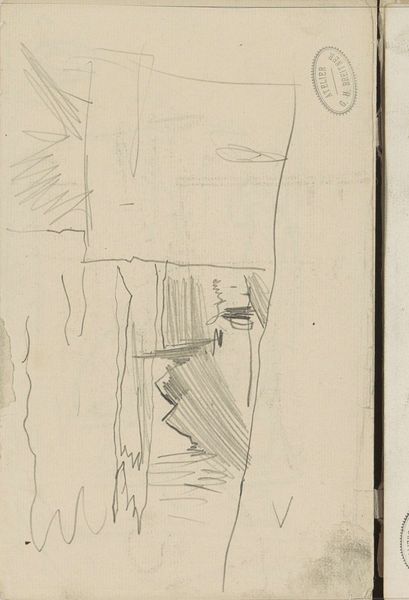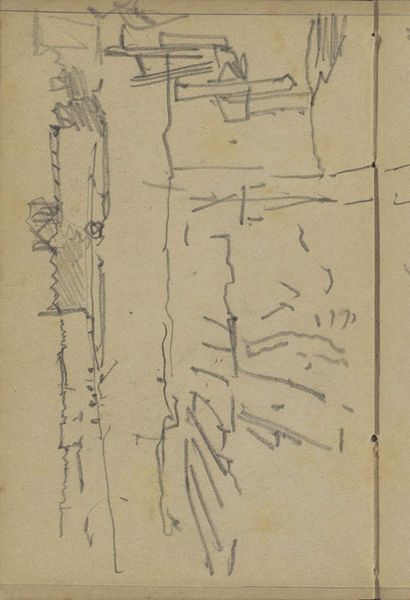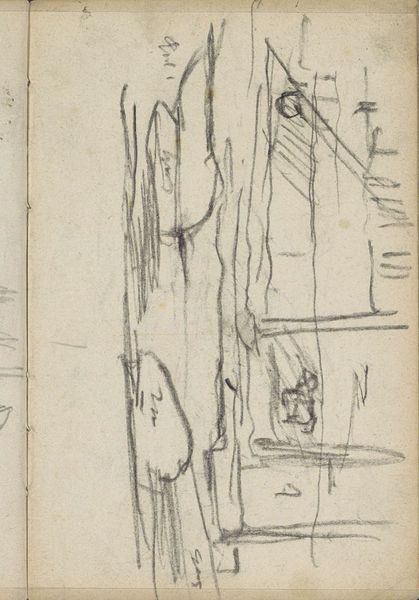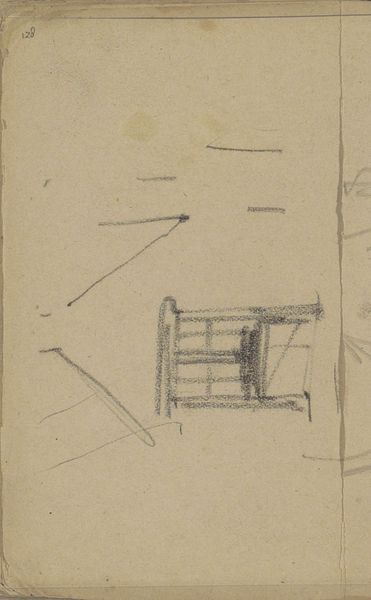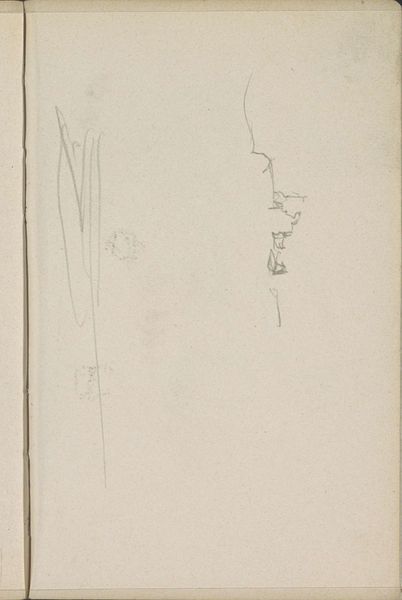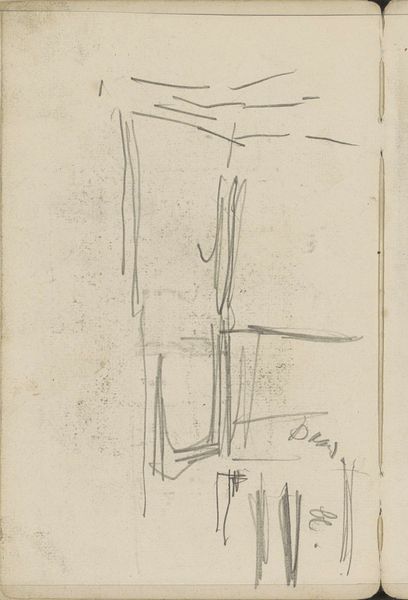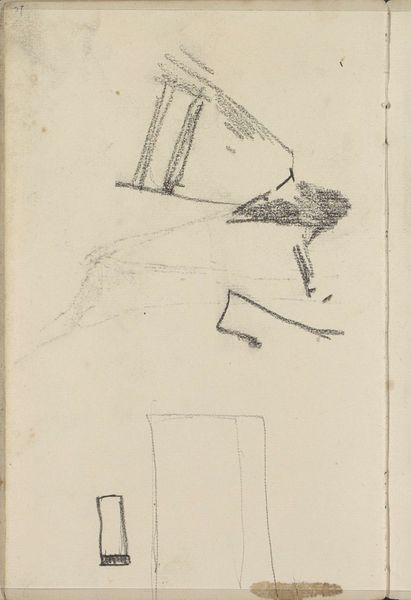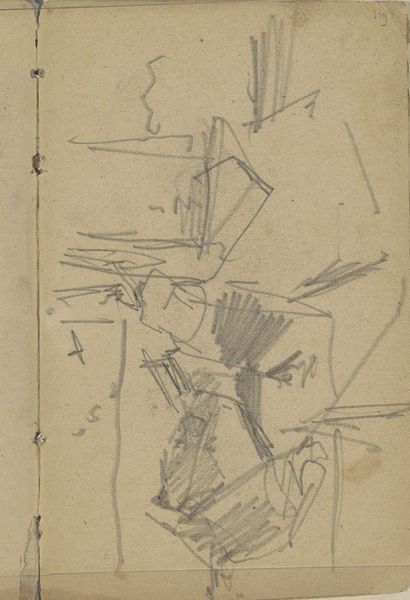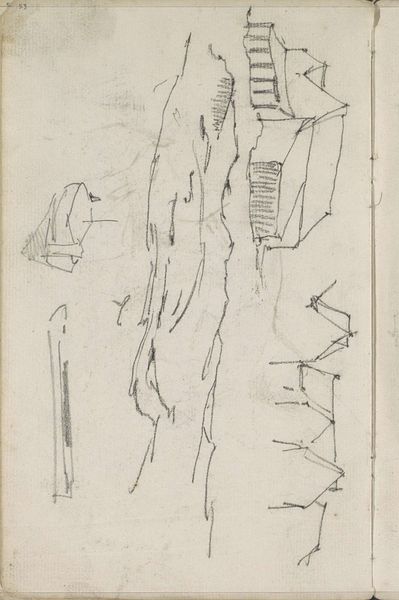
Kraan van de teerkokerij aan de Nieuwe Teertuinen te Amsterdam 1896 - 1914
0:00
0:00
georgehendrikbreitner
Rijksmuseum
Copyright: Rijks Museum: Open Domain
Editor: This pencil sketch, “Kraan van de teerkokerij aan de Nieuwe Teertuinen te Amsterdam” by George Hendrik Breitner, probably made between 1896 and 1914, feels incredibly immediate, like a fleeting observation. What catches your eye in this work? Curator: I'm immediately drawn to how Breitner’s sketch embodies the rapidly changing urban landscape of Amsterdam during that period. The "teerkokerij," or tar distillery, and its crane were part of the city's industrial development, but also spaces of intense labor and potentially, environmental degradation. The sketch becomes a document of a specific time and place. What narratives might this image be whispering about labor, industrialization, and their impact on the social fabric? Editor: That’s a fascinating way to look at it. I was focusing on the visual elements – the almost abstract quality of the lines, the way the crane is barely defined. Are you suggesting that those lines can tell us something about social issues? Curator: Absolutely. The sketchiness could reflect the transient nature of urban life, the constant flux of a city in transition. Who benefits and who suffers from this progress? Was Breitner consciously commenting on the social inequalities inherent in industrial expansion? Perhaps, perhaps not. But it does provoke us to ask ourselves who these industrial landscapes are made for, and at what cost. Editor: I see what you mean. It's more than just a quick drawing of a crane. It's a snapshot of a society grappling with change. Curator: Precisely! It pushes us to consider the artist’s role in documenting and perhaps even critiquing societal shifts. We are also compelled to consider our own roles in contributing and shaping contemporary history. Editor: This has really changed how I see this simple sketch. Thank you! Curator: My pleasure. Remember, art is always in conversation with its context, inviting us to join the dialogue.
Comments
No comments
Be the first to comment and join the conversation on the ultimate creative platform.
